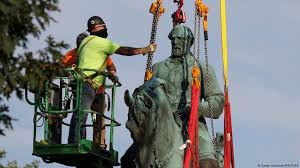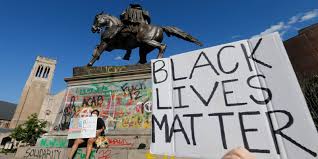|
On August 23, 2021, the Food and Drug Administration (FDA) granted full approval to the Pfizer/BioNTech COVID-19 vaccine for people age 16 and older. This vaccine had been authorized for emergency use since December 11th for people age 16 and older. In May the emergency use authorization was expanded to include children age 12-15, which still remains in effect. Of the approximately 170 million Americans who are fully vaccinated, about 54% received the Pfizer vaccine. The approval comes 97 days after Pfizer provided the FDA with over 340,000 pages of documents to support their application. The FDA had reportedly been working on the application around the clock, and the approval took about half the time that it normally does. Now that the Pfizer vaccine has received the FDA’s gold standard for safety, effectiveness, and manufacturing quality, will it provide the impetus for vaccine holdouts to get vaccinated? What are the other implications of the Pfizer vaccine approval, and what about the other COVID-19 vaccines? Vaccine Holdouts: Public health officials are hopeful that the FDA approval of Pfizer’s vaccine will motivate more people to get the vaccine. As of August 23rd, there were approximately 82 million eligible Americans who had not yet received a COVID vaccine, for a variety of different reasons. According to the Kaiser Family Foundation, 3 in 10 unvaccinated adults said that they would be more likely to get vaccinated if one of the vaccines were to receive full FDA approval, https://www.kff.org/coronavirus-covid-19/poll-finding/kff-covid-19-vaccine-monitor-june-2021/. This is certainly encouraging, but only time will tell. It has been known for some time that a major reason for vaccine hesitancy is due to the notion that COVID vaccines are “experimental”. The FDA approval of the Pfizer vaccine takes this excuse off the table. Vaccine Mandates: Mandating a vaccine that had not received full FDA approval was problematic from a legal and ethical standpoint. But that has all changed. On the same day that the Pfizer vaccine received full FDA approval the Pentagon announced that it would require all active-duty service members to be vaccinated. Many large employers, school districts, universities, and other public and private entities have also announced vaccine mandates in recent days. Many organizations and municipalities have tried to increase vaccination rates by offering prizes and giveaways, with limited success. Mandates might help to push some people who are still on the fence about getting vaccinated. Other Implications of Full FDA Approval:
Booster Shots are Coming: The Biden Administration prematurely announced that starting September 20, 2021 booster shots would become available for adults eight months after their second shot of either the Moderna or Pfizer COVID vaccine. But before this can happen each vaccine manufacturer needs to receive FDA approval to provide boosters for their particular vaccine. To date only Pfizer has provided the FDA with initial data to justify a booster shot. Pfizer plans to submit its full application within days to provide boosters to people age 16 and older. Moderna and Johnson & Johnson will submit their data later this fall. Approval for boosters is not a matter of if, but when. The data coming in is overwhelmingly positive. This week Pfizer released data showing a third dose given 5-8 months after the second dose resulted in a 3- fold increase in coronavirus fighting antibodies, https://www.reuters.com/world/us/pfizer-starts-process-seek-us-approval-covid-19-vaccine-booster-2021-08-25/. Data coming out of South Africa shows a 9-fold increase in antibodies from a booster dose of the Johnson & Johnson vaccine given 6 months after the first, https://www.cnn.com/2021/08/25/health/johnson-vaccine-booster-data/index.html. If you can’t wait for the FDA to officially sanction booster shots, simply ask your personal physician. If you have been fully vaccinated with the Pfizer vaccine, your physician may legally provide a third dose now that it has received full FDA approval. Vaccine Inequity: Not everyone is happy about the U.S. and other developed countries rolling out booster shots. The head of the World Health Organization called the strategy “a mockery of vaccine equity”. With only about 2% of the African population fully vaccinated, I tend to agree. We have seen how contagious the delta variant is. Unvaccinated people are the incubators of new coronavirus variants, which could one day overcome the protection offered by current vaccines. The full FDA approval of the Pfizer vaccine is a good thing. It legitimizes this important weapon against COVID-19, which is still rampaging through the world. It eliminates the stigma of being “experimental” used by many as an excuse for not getting vaccinated. FDA approval provides legal cover for businesses, organizations and schools to mandate COVID vaccines when they deem it necessary. In the weeks and months ahead, Moderna and Johnson & Johnson will be submitting applications for full FDA approval for their vaccines. COVID vaccines have saved countless lives and have been used safely in hundreds of millions of people around the world. Full FDA approval of these vital vaccines can’t come soon enough. Here is a link to the FDA press release on the full authorization of the Pfizer COVID vaccine, https://www.fda.gov/news-events/press-announcements/fda-approves-first-covid-19-vaccine. If you enjoy reading this type of commentary please subscribe to my blog and tell a friend. You will receive an email notification when new blogs are posted. The email will come from the site’s email: armchairamerican1776 @gmail.com.
Thanks, Armchair American
0 Comments
Last month the city of Charlottesville, Virginia removed the statues of Confederate Generals Robert E. Lee and Stonewall Jackson from public parks after four years of court battles and public protests. White nationalists gathered in Charlottesville in August of 2017 for the “Unite the Right” rally to protest the removal of the Robert E. Lee statue. The rally turned violent, leading to the death of one counter-protestor. In the aftermath of the protests against racism and police brutality following the deaths of George Floyd and Breonna Taylor, there have been renewed calls across the country to remove Confederate statues and monuments. According to the Southern Poverty Law Center, over 160 Confederate statues have been removed, or toppled, since the death of George Floyd. But 1600 statues, monuments and other symbols of the Confederacy remain(https://www.splcenter.org/presscenter/splc-reports-over-160-confederate-symbols-removed-2020). Some will argue that Confederate monuments glorify a racist ideology and must be removed, while others argue that their removal is an attempt to erase or re-write history. What should be done with these monuments to preserve the historic record while promoting race relations and eliminating symbols of hate from our public places? There is little chance that a consensus will be reached anytime soon on such a contentious issue. But the United States is not alone in confronting its dark past, so maybe there are lessons to be learned from other countries. Historical Perspective: Statues and monuments on public display are visible symbols of what a society values and those who exemplify those values. They commemorate important events, venerated leaders, and memorialize those lost serving our country. Monuments remind us of the sacrifices made by others, and provide an historic link to our past. Most public monuments are noncontroversial because they memorialized the values of the majority of citizens when they were erected, and those values stand to this day. But that was not the case with Confederate monuments built after the Civil War. According to the American Historical Association ( https://www.historians.org/news-and-advocacy/aha-advocacy/aha-statement-on-confederate-monuments), most Confederate monuments were not built in the immediate aftermath of the Civil War, but from the close of the 19th century into the second decade of the 20th . There was a concerted effort by the “Daughters of the Confederacy”, White Southern politicians, and other groups to restore the reputation of the Confederacy, and to promote their racist views. It is no accident that the South after Reconstruction managed to enact racist laws (Jim Crow laws) which led to mandated segregation and widespread disenfranchisement of African Americans. The Southern Poverty Law Center goes as far as stating that Confederate monuments glorified the old South and was part of an organized campaign to terrorize African American communities. The commemoration of Confederate monuments during the mid-20th century coincided with the Civil Rights Movement, something that was strongly opposed by the Southern states. Removal is Not Erasing History: Removing Confederate monuments from public places is in no means an attempt to erase history. A monument is not history itself; it commemorates an aspect of history that the sponsors chose. It is more important than ever that we learn from our history, not erase it, in order to understand the roots of racism. The removal of a Confederate statue or monument is a civic statement that hatred and bigotry are no longer to be tolerated, and those represented no longer deserve an honored place in our society. But doesn’t this create a slippery slope? Shouldn’t we remove statues and memorials to George Washington and Thomas Jefferson, both of whom owned slaves? Reasonable people will differ on this, but I don’t believe so. There is a huge difference between our Founding Fathers who owned slaves and the Confederates who attempted to tear this country apart in order to preserve slavery. The Founding Fathers fought and died to build this country, and understood that slavery was a flawed institution that would not last. Preserving History: Destroying a piece of public property because you find it offensive is vandalism, which I do not condone. Vandalizing Confederate statues does more to promote divisiveness than it does to promote healing. Confederate memorials are artifacts of their time and place, and should be preserved just like any other historic artifact. There should be a process in place to properly document and remove statues and memorials from public places. Prior to removal they should be photographed, measured, and documented in their original contexts. Most Confederate memorials which have been taken down now sit in storage awaiting final disposition. What to do With Confederate Memorials: I believe that all monuments and symbols that glorify the Confederacy or its leaders should be removed from public places. The Confederacy is a symbol of racist ideology, and any memorials to it do not deserve a place of honor in the public squares of America. Its leaders nearly destroyed this country, and the Confederate flag is used by white nationalists as a symbol of hate. But Confederate memorials should not be destroyed. They should be preserved in such a way that the context in which they emerged will not be lost to future generations. Memorial parks and museums in other countries exist to preserve monuments to their dark pasts without glorifying them. You won’t find any public memorials or shrines to Adolf Hitler or Nazism in Germany. It’s against the law. Statues of facist leaders Mussolini and Francisco Franco are no longer on public display in Italy and Spain. You would be hard pressed to find a statue of Lenin or Stalin in most of the former Soviet block countries. So, what should the United States do with its statues to Confederate “heroes” without ignoring the past that they represent? One way would be to create memorial parks and place the statues in historic context like has been done in Hungry, India, Lithuania and Russia. Momento Park near Budapest, Hungry was built after the fall of the Soviet Union and displays dozens of statues of Communist leaders. The exhibition hall is built to look like an internment camp for political prisoners, and teaches about democracy and dictatorship. The Muzoen Park of Arts outside of Moscow displays more than 700 statues of former Soviet leaders. Coronation Park in India was built after independence from Britain. It is the resting place for statues of British monarchs and colonial overlords. Grutas Park in Lithuania is a sculpture garden of Soviet era statues and ideologic relics. It was designed to preserve the statues and showcase the country’s Soviet era past in a family friendly atmosphere. These parks, and many museums around the world, help to put offensive statuary and monuments into proper historic perspective. They also provide a way for future generations to learn from the past. These historic parks may provide a model for the United States to preserve its Confederate artifacts and put them into historical perspective for current and future generations. This could be accomplished at the state level where the statues and monuments currently preside, or through a national park or museum, possibly in collaboration with the Smithsonian. Removing polarizing pubic displays such as Confederate memorials will not resolve racial tensions in this country, but it should help. Shining a light on our dark past is an important path forward. Confederate monuments were erected to glorify a racist way of life that no longer exists, and they served to suppress a population that had no say in their construction. Confederate memorials should be methodically removed from their public places of honor and placed in museums along with a true accounting of how they came into existence. The issue of what to do with memorials to historic figures that have fallen out of favor is a big one, and I have only scratched the surface. Statues of Christopher Columbus have been removed from many public places across the country. In California statues of Father Junipero Serra, who developed the California mission system, are now coming down. Schools and public buildings are being re-named because their namesakes have somehow offended some segment of society. Sports teams are being re-named because they contain images or words that are considered racial slurs. I think some of this has gone too far. This might be the topic of a future blog.
If you enjoy reading this type of commentary please subscribe to my blog and tell a friend. You will receive an email notification when new blogs are posted. The email will come from the site’s email: armchairamerican1776 @gmail.com. Thanks, Armchair American |
AuthorThe Armchair American. Archives
November 2024
Categories
All
|





















 RSS Feed
RSS Feed